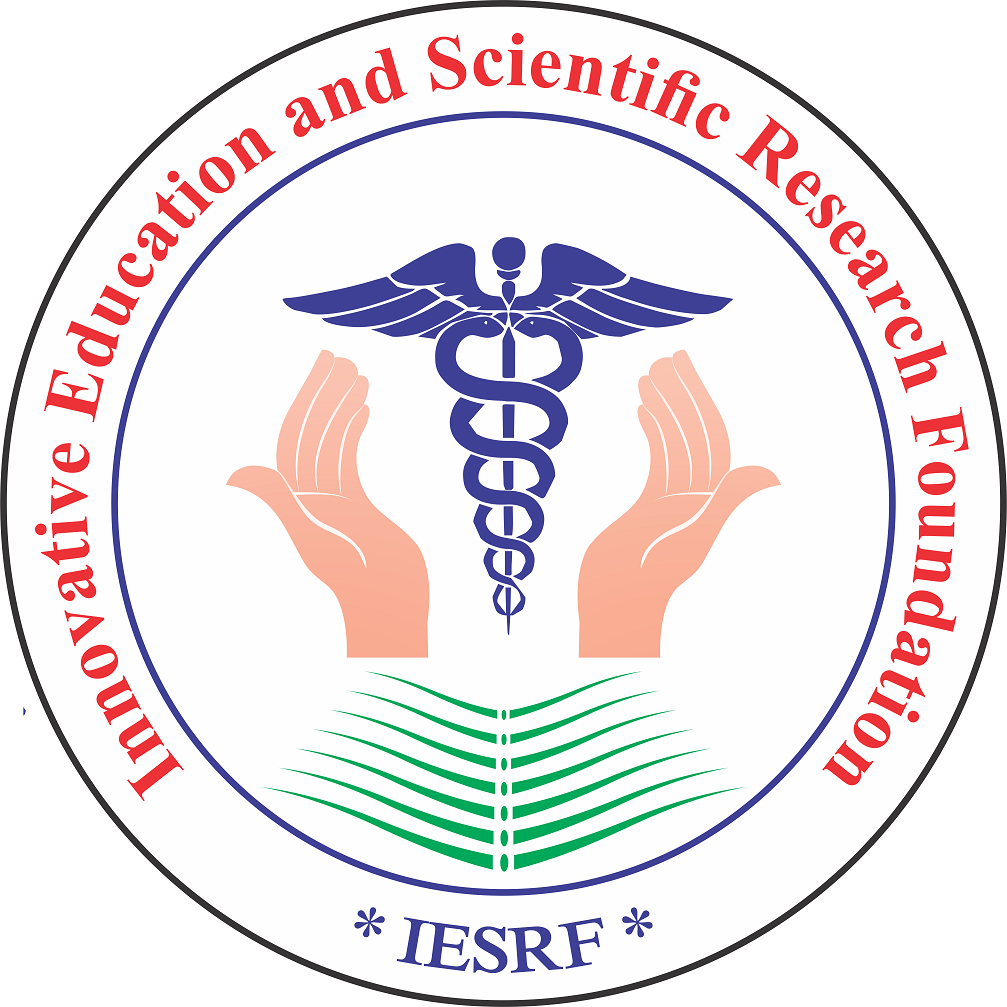- Visibility 100 Views
- Downloads 70 Downloads
Castelli risk indices as useful indicators of atherogenic risk in subclinical hypothyroidism
- Author Details:
-
Smita Kottagi
-
Triveni Jamble
-
Srinivas Deshpande
Introduction: Thyroid hormones play an important role in regulating lipid metabolism. Subclinical Hypothyroidism (SCH) is increased thyrotropin-stimulating hormone (TSH) with normal T3, T4 levels. SCH is associated with derangements in Lipid metabolism, indicated by elevated cholesterol, HDL cholesterol, LDL cholesterol, increased incidence of atherosclerosis, leading to Atherogenic risk in SCH. Significance of dyslipidemia in SCH remains controversial.
Objectives: To quantitatively detect levels of total-cholesterol, HDL-Cholesterol, & LDL-Cholesterol and to assess lipid atherogenic risk based on Castelli risk indexes (CRI) in Subclinical Hypothyroidism.
Materials and Method: 30 SCH cases compared with 30 euthyroid controls. Serum T3, T4, TSH estimated by ELISA method, Serum Total-Cholesterol, HDL-Cholesterol by enzymatic CHOD-PAP method, LDL-Cholesterol using Friedewald formula. Systolic and diastolic blood pressure was measured in all cases.
Results: Serum levels of TSH (P<0.001), Total cholesterol (p<0.001), LDL Cholesterol (P<0.001), CRI-I (TC/HDL) (p<0.001) and CRI-II (LDL/HDL) (p<0.001) Systolic & diastolic blood pressure (P<0.001) showed significant increase. No significant change in levels of serum T3, T4, HDL-Cholesterol. Individual analysis revealed that the percentage change was higher for TSH and CRI.
Conclusion: Results contribute to high atherogenic risk as indicated by CRI. So CRI can be used as better indicator of dyslipidemia as compared to isolated lipid profile parameters and highlights cardiovascular risk in SCH.
Keywords: Castelli risk index – I, Castelli risk index – II, Subclinical Hypothyroidism, Atherosclerosis
References
- Surks MI, Ortiz E, Daniels GH, Sawin CT, Col NF, Cobin RH, et al. Subclinical Thyroid Disease Scientific Review and Guidelines for Diagnosis and Management. JAMA, January 14, 2004—Vol 291, No. 2, 228-238.
- Surks MI, Hollowell JG. Age-specific distribution of serum thyrotropin and antithyroid antibodies in the US population: implications for the prevalence of subclinical hypothyroidism. J Clin Endocrinol Metab. 2007 Dec;92(12):4575-4582.
- Rodondi N, Newman AB, Vittinghoff E, Rekeneire ND, Satterfield S, Harris TB, et al. Subclinical Hypothyroidism and the Risk of Heart Failure, Other Cardiovascular Events, and Death. Arch Intern Med. 2005;165:2460-2466.
- Tunbridge WMG, Evered DC, Hall R, et al. The spectrum of thyroid disease in a community: the Whickham survey. Clin Endocrinol (Oxf). 1977;7:481–93. 19. Ayala A, Danese MD, Ladenson PW. When to treat mild hypo- thyroidism. Endocrinol Metab Clin N Am. 2000;29:399–
- Soos M, Siddle K. Characterization of monoclonal anti- bodies directed against human thyroid stimulating hor- mone. J Immunol Methods 1982; 51(1): 57-68.
- Koszegi T, Walker WHC. Introduction: An Approach to Immunoassay. Clin Chem 1977; 23: 384.
- Schuurs AH, Van Weeman BK. Enzyme-immunoassay. Clin Chim Acta 1977; 81(1): 1-40.
- Rifai N, Warnick GR. Lipids, lipoproteins, apolipoproteins and other cardiovascular risk factors. In: Burtis CA, Ashwood ER and Bruns DA, eds. Tietz Text Book of Clinical Chemistry and Molecular Diag- nostics, 4th ed. New Delhi: Elsevier Co; 2006: 916-952.
- Rifai N, Iannotti E, DeAngelis K, Law T. Analytical and clinical performance of a homogeneous enzymatic LDL- cholesterol assay compared with the ultracentrifugation- dextran sulfate-Mg2+ method. Clin Chem 1998; 44(6 Pt 1):1242-1250.
- Irwin Klein and Sara Danzi. Thyroid Disease and the Heart. Circulation 2007; 116:1725-1735.
- Becker C Hypothyroidism and atherosclerotic heart disease: pathogenesis, medical management, and the role of coronary artery bypass surgery. Endocr Rev,1985; 6:432–440.
- Velkoska Nakova V.,1 Krstevska B., 1 dyslipidaemia and hypertension in patients with subclinical hypothyroidism Sec. Biol. Med. Sci., XXX/2 (2009), 93–102.
- Paula Herer et al Cardiovascular risk factors in middle- aged women with subclinical hypothyroidismJ Neuroendocrinol 2004 1533–1538.
- Bindels V. Krstevska B, Bosevski M, Dimitrovski Ch.,1 Serafimoski V Dyslipidaemia and hypertension in patients with subclinical hypothyroidism Sec. Biol. Med. Sci., MASA;2009:93–102.
- Fernandez M, Webb D. The LDL to HDL cholesterol ratio as a valuable tool to evaluate coronary heart disease risk. J Am Coll Nutr. 2008;27(1):1–5.
- Luboshitzky R & Herer P. Cardiovascular risk factors in middle-aged women with subclinical hypothyroidism. Neuroendocrinol Lett 2004; 25(4):262–266.
- B. U. Althaus, J.-J. staub, et al LDL/HDL-changes in subclinical hypothyroidism: possible risk factors for coronary heart disease Clinical Endocrinology .1988 volume 28 issue 2 pages 157–163.
How to Cite This Article
Vancouver
Kottagi S, Jamble T, Deshpande S. Castelli risk indices as useful indicators of atherogenic risk in subclinical hypothyroidism [Internet]. Int J Clin Biochem Res. 2017 [cited 2025 Oct 29];4(4):432-434. Available from: https://doi.org/
APA
Kottagi, S., Jamble, T., Deshpande, S. (2017). Castelli risk indices as useful indicators of atherogenic risk in subclinical hypothyroidism. Int J Clin Biochem Res, 4(4), 432-434. https://doi.org/
MLA
Kottagi, Smita, Jamble, Triveni, Deshpande, Srinivas. "Castelli risk indices as useful indicators of atherogenic risk in subclinical hypothyroidism." Int J Clin Biochem Res, vol. 4, no. 4, 2017, pp. 432-434. https://doi.org/
Chicago
Kottagi, S., Jamble, T., Deshpande, S.. "Castelli risk indices as useful indicators of atherogenic risk in subclinical hypothyroidism." Int J Clin Biochem Res 4, no. 4 (2017): 432-434. https://doi.org/
